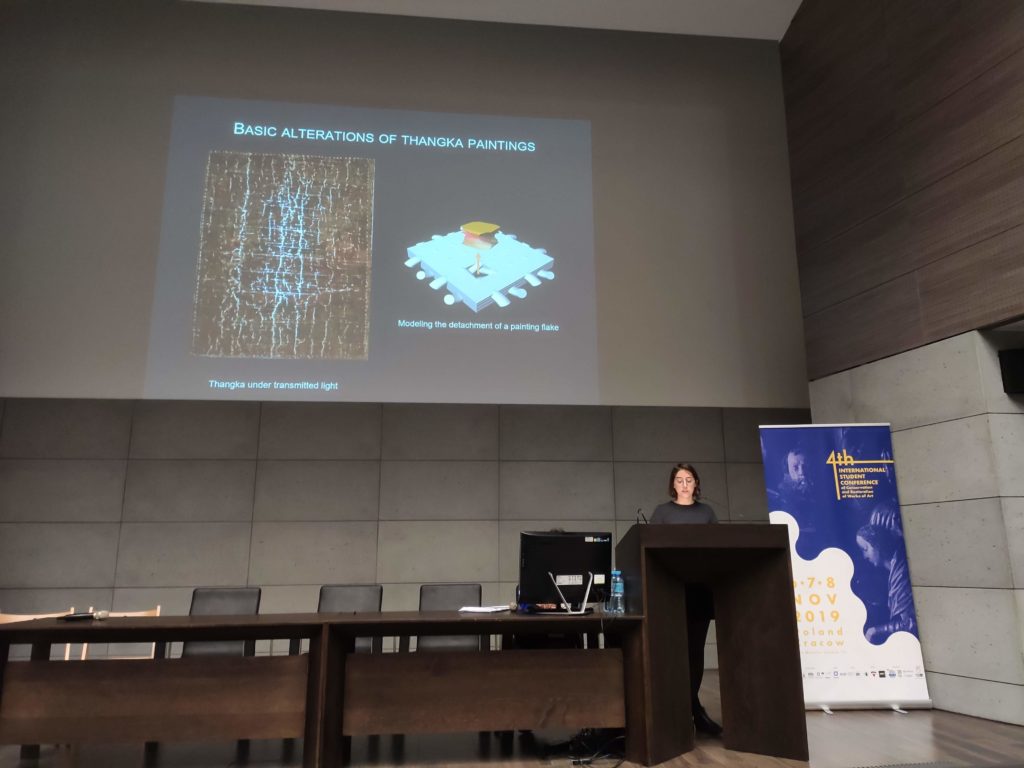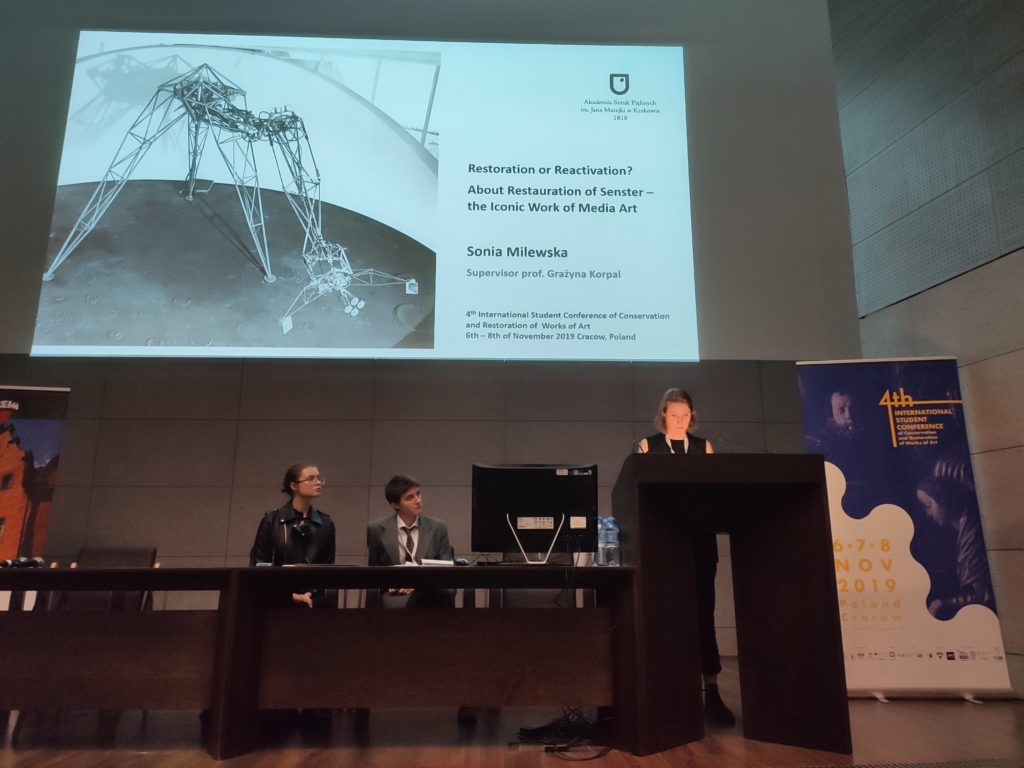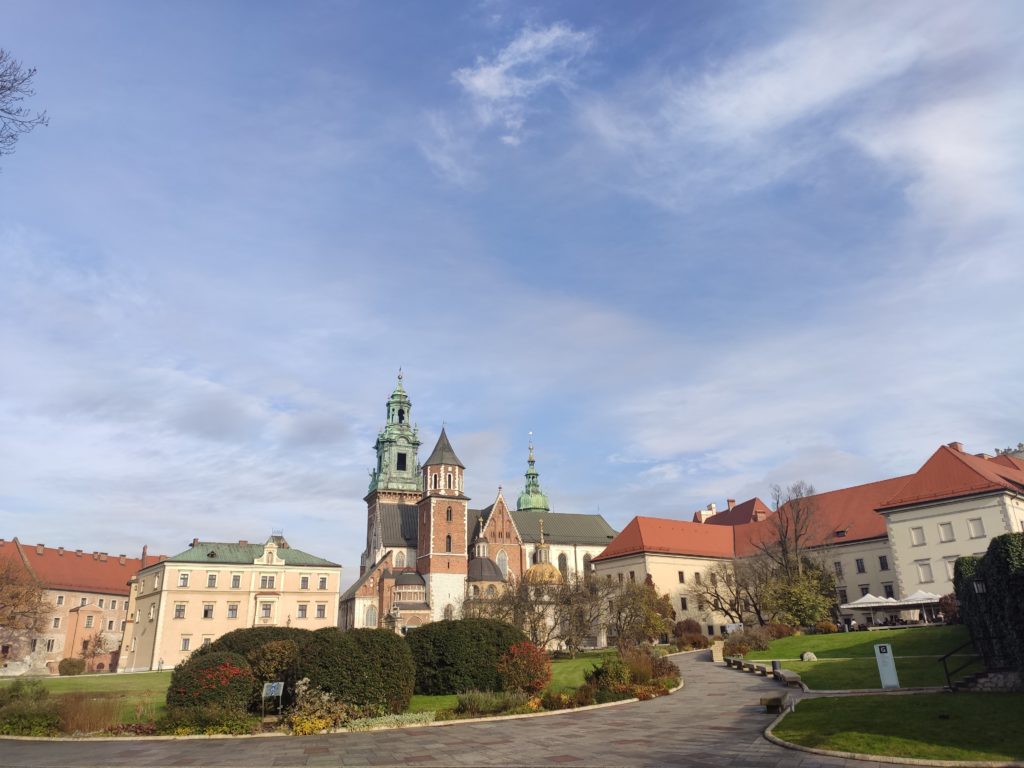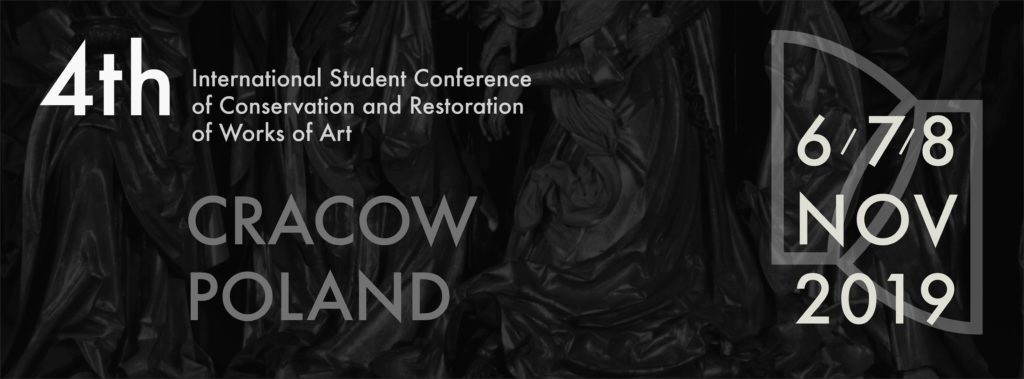
by Marina Herriges, 2nd year student, MPhil Textile Conservation.
Meeting and exchanging knowledge with masters and PhD students from different countries at a conference during three days in Poland. That was my initial thought when I registered myself for the 4th International Student Conference of Conservation and Restoration of Works of Art, in Krakow on 4-6 November 2019.
Textiles were presented from the perspective of painting conservators in two lectures. The Orthodox Church painted banners from the late 19th century in Russia were presented by Agnieska Beczyczko, from Poland. The focus was the characterization of the iconography, technique and technology applied to these objects. It was interesting to hear the approach from a painting conservator´s view, in which the focus was given to the characteristics of the painting layer rather than the linen support. Another interesting presentation on a similar topic was given by Margaux Ruon, from France. She spoke about Tibetan Thangkas, in which nano particles were added in the preparation layer used to retouch the painting – incorporating fluorochrome into the gesso. Margot considered the conservation deontology based on painting conservation, in order to develop an appropriate method – distinguishable and easy to detect under UV light. However, she recognised that further research needs to be done in order to develop the investigation.

A highlight of the conference was the number of different students from all over Europe, representing different academic institutions and presenting papers in a wide range of conservation disciplines. It was a great pleasure to participate and hear about the differences in views, concepts and ethics within conservation. Painting and sculpture conservation were featured heavily throughout those days, however as an emerging textile conservator, I was looking forward to hearing papers that were cross discipline, involving textile conservation, which was seen in some talks. Current issues and challenges in conservation were also discussed in papers and informal chats.
Fascinating talks were given in other areas of conservation, with an approach related to the community and modern conservation issues. Monika Topolska, from Poland, presented her research on a prison cell within the Gestapo station of Zakopane from the II World War. This was particularly thought provoking to see, as the involvement and heavy toll of countries like Poland in the past conflict brought this closer to home and made it all the more poignant. She aimed to preserve the remaining parts of the original cell, providing unit for the room and drawing attention to the place as a testimony of the war – using the musealization example of Auschwitz as a model to be followed.
‘Modern conservation issues’ was the name of one of the panels which aimed to reflect upon current concerns and new ideas in the field. A multidisciplinary project in the conservation of contemporary art called Re: Senster, presented by Sonia Milewska (Poland-UK), was a very exciting presentation. Concepts of authenticity, artists intent, documentation and conservation using engineering tools were used to highlight issues and challenges regarding the conservation of ephemeral art.

Finally, gels appeared in various papers as an attempt for cleaning different surfaces. However, similar issues were pointed out in all of them, such as the difficulty in treating large surfaces, being time consuming to make and apply, and the complexity of controlling the treatment while the gel is acting. Nevertheless, it seems to be an ongoing work, presenting good properties regarding healthy and safety.

Apart from the conference and trying to make the most of my visit in Krakow – with the help of Professor Frances Lennard – I was able to visit the textile conservation studio at Wawel Royal Castle. Declared a Unesco World Heritage Site in 1978, Wawel is an important cultural institution being one of the most visited places in Poland. My visit was split into two stages. The first part was led by Magdalena Ozga, responsible for the castle’s textile collection. She kindly shared her enormous knowledge and gave me a wonderful guided visit around the building, presenting the astonishing collection of tapestries from different periods. Following this visit, I went to the textile conservation studio, where I was warmly welcomed by the head of the department, Jerzy Holc. He showed me the amazing work they have been doing at the workshop, discussing materials and techniques used in tapestry conservation in Poland. It was a wonderful opportunity to see a different approach within the field, talk to other textile conservators and learn from their vast experience.
In conclusion, I can say that my time in Krakow was a fantastic opportunity and definitely worthwhile. I gained insight from a wide range of researchers, heard different views concerning the challenges and new approaches in conservation as well as re-valuate my own practice in the field. It was lovely to visit a well-known institution such as Wawel Castle and find out how they take care of their textile collection; from conservation to the diffusion of the work and history. Apart from attending the congress, walking around the gorgeous city experiencing local culture, trying regional food and seeing historical sites just added to an already fantastic trip.
I would like to thank the June Baker Trust very much for making possible to attend the 4th International Student Conference of Conservation and Restoration of Works of Art in Poland.


